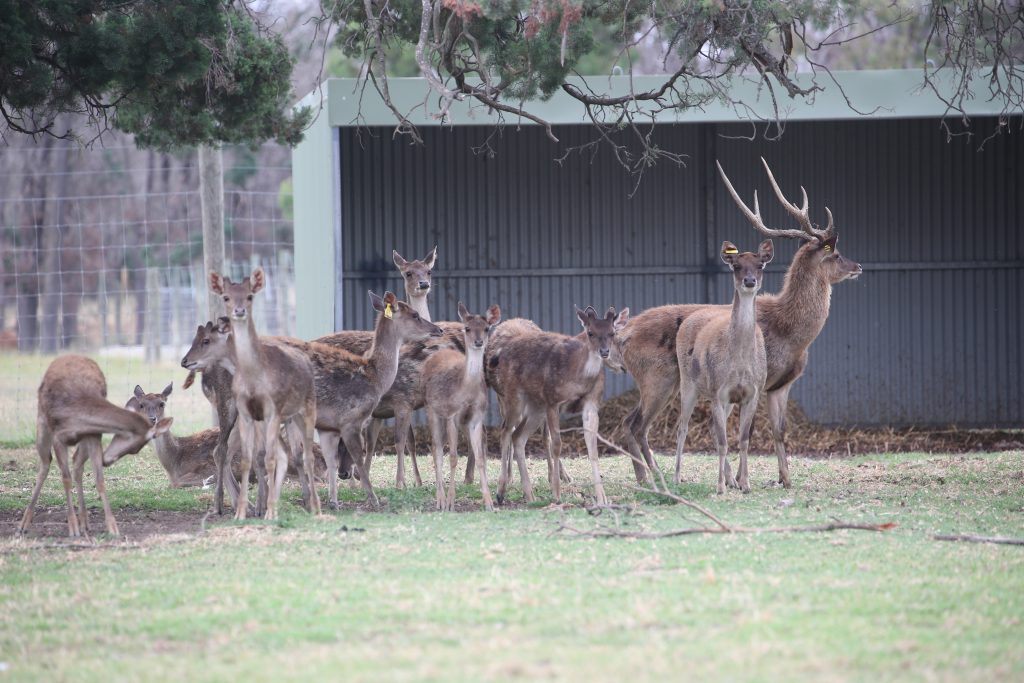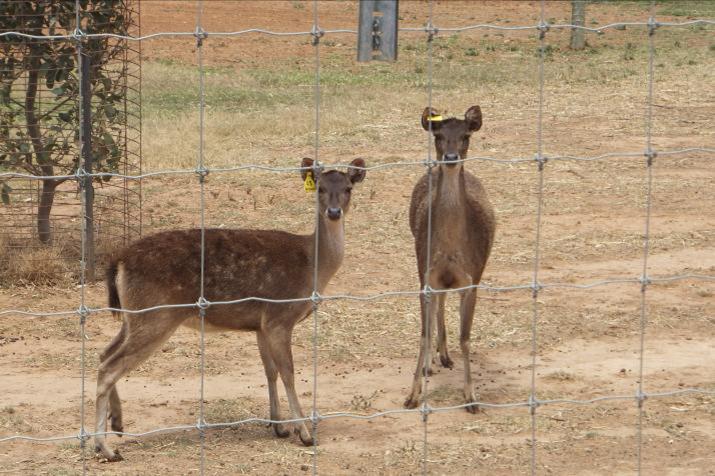Rusa Deer (Cervus timorensis)
Habitat:
Rusa Deer are Native to South East Asia, Indonesia, Lesser Sunda Islands and Timor Island. They are usually found in deciduous forests, plantations and grasslands.
Description:
Rough greyish brown coat and is often coarse in appearance. The ears are broad and slightly rounded. The legs are relatively short, giving this deer a slightly stubby appearance. Only the males bear the lyre-shaped three-tined (points) antlers. Antlers have been recorded growing to lengths of 110cm but more often than not lengths are usually at around 75cm. Rusa deer stand up to 110cm in height with its weight measuring at 115kgs.
Status:
Vulnerable
Interesting facts:
- Group Structure: Usually 25 females and their young to 1 dominant male.
- Diet: Primarily grasses but will also feed on leaves.
- Rusa deer rarely drink, obtaining their needed moisture from the plants that they eat.
- During mating season, Males very rarely fight but rather ‘plough’ vegetation and amass large bundles of greenery on their antlers which they use to establish dominance over other males.
- Sexual Maturity: 2 years.
- Gestation: 8 months or approximately 252 days giving birth to usually one fawn although occasionally twins may be born.
- Rusa deer are predominantly nocturnal but may graze during the day.
- Rusa antlers grow in a backward direction to prevent entanglement while running through dense forests.
- Lifespan: up to 20 years.

Rusa Deer Population Distribution Map






